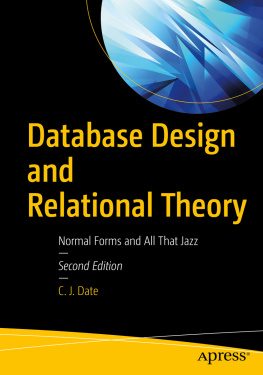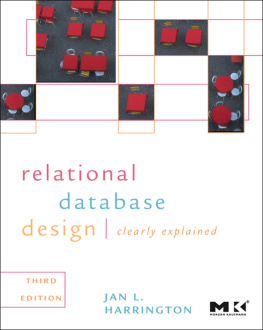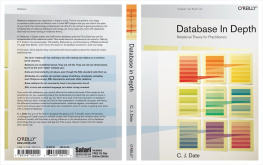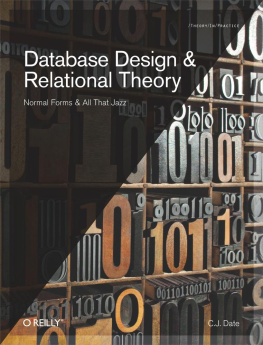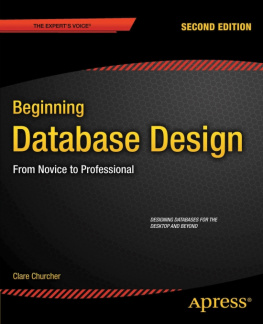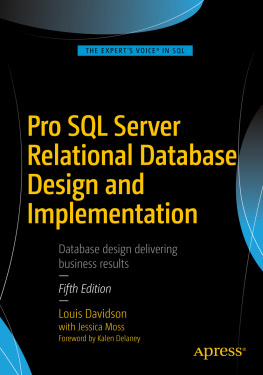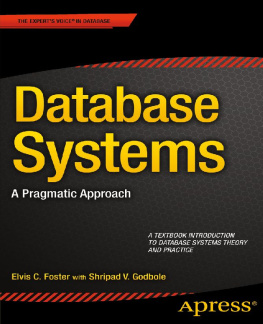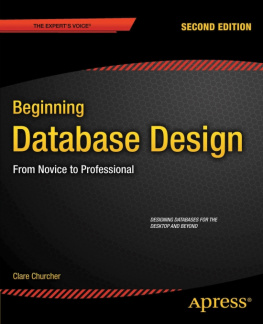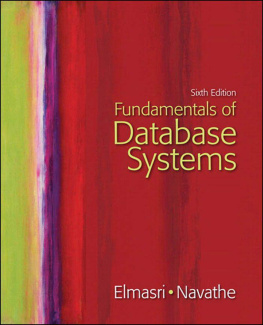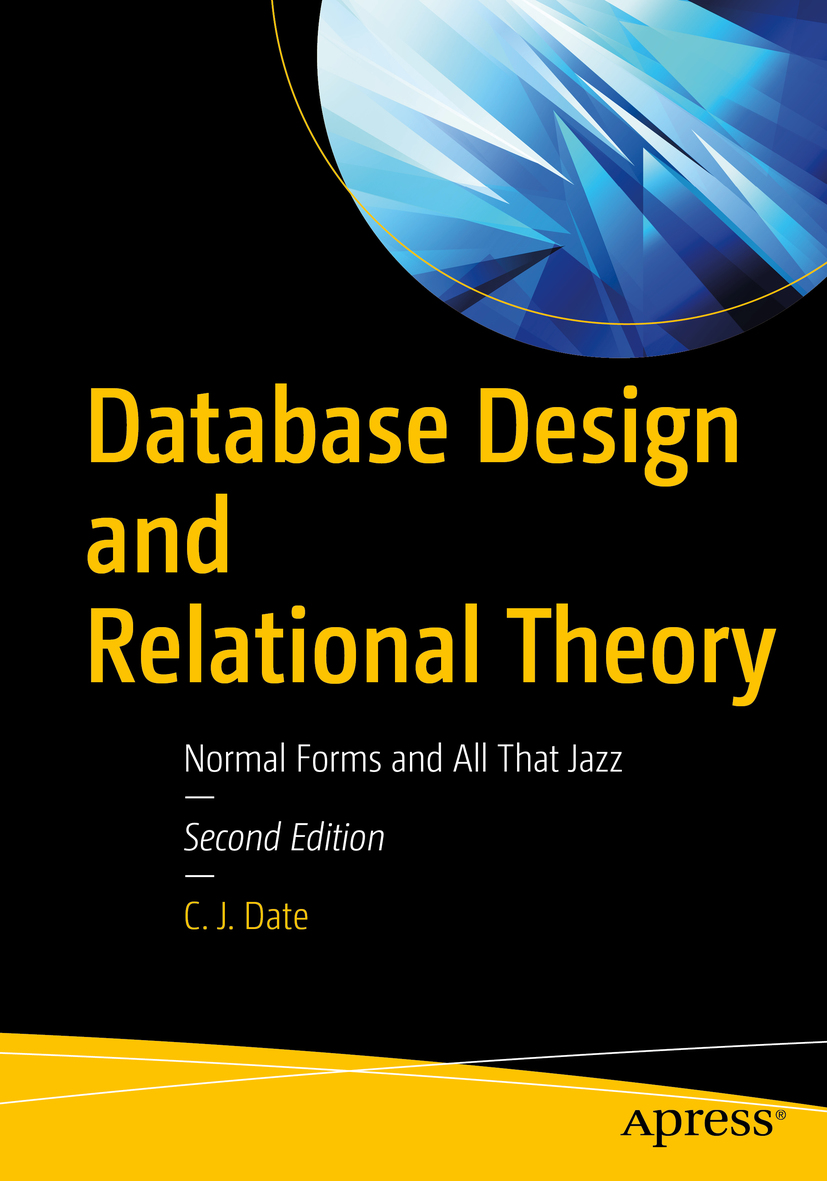C. J. Date - Database Design and Relational Theory: Normal Forms and All That Jazz
Here you can read online C. J. Date - Database Design and Relational Theory: Normal Forms and All That Jazz full text of the book (entire story) in english for free. Download pdf and epub, get meaning, cover and reviews about this ebook. year: 2019, publisher: Apress, genre: Romance novel. Description of the work, (preface) as well as reviews are available. Best literature library LitArk.com created for fans of good reading and offers a wide selection of genres:
Romance novel
Science fiction
Adventure
Detective
Science
History
Home and family
Prose
Art
Politics
Computer
Non-fiction
Religion
Business
Children
Humor
Choose a favorite category and find really read worthwhile books. Enjoy immersion in the world of imagination, feel the emotions of the characters or learn something new for yourself, make an fascinating discovery.
- Book:Database Design and Relational Theory: Normal Forms and All That Jazz
- Author:
- Publisher:Apress
- Genre:
- Year:2019
- Rating:4 / 5
- Favourites:Add to favourites
- Your mark:
Database Design and Relational Theory: Normal Forms and All That Jazz: summary, description and annotation
We offer to read an annotation, description, summary or preface (depends on what the author of the book "Database Design and Relational Theory: Normal Forms and All That Jazz" wrote himself). If you haven't found the necessary information about the book — write in the comments, we will try to find it.
This book is about database design theory. Design theory is the scientific foundation for database design, just as the relational model is the scientific foundation for database technology in general. Databases lie at the heart of so much of what we do in the computing world that negative impacts of poor design can be extraordinarily widespread.
This second edition includes greatly expanded coverage of exotic and little understood normal forms such as: essential tuple normal form (ETNF), redundancy free normal form (RFNF), superkey normal form (SKNF), sixth normal form (6NF), and domain key normal form (DKNF). Also included are new appendixes, including one that provides an in-depth look into the crucial notion of data consistency. Sequencing of topics has been improved, and many explanations and examples have been rewritten and clarified based upon the authors teaching of the content in instructor-led courses.
This book aims to be different from other books on design by bridging the gap between the theory of design and the practice of design. The book explains theory in a way that practitioners should be able to understand, and it explains why that theory is of considerable practical importance. Reading this book provides you with an important theoretical grounding on which to do the practical work of database design. Reading the book also helps you in going to and understanding the more academic texts as you build your base of knowledge and expertise. Anyone with a professional interest in database design can benefit from using this book as a stepping-stone toward a more rigorous design approach and more lasting database models.
What You Will Learn
- Understand what design theory is and is not
- Be aware of the two different goals of normalization
- Know which normal forms are truly significant
- Apply design theory in practice
- Be familiar with techniques for dealing with redundancy
- Understand what consistency is and why it is crucially important
Who This Book Is For
Those having a professional interest in database design, including data and database administrators; educators and students specializing in database matters; information modelers and database designers; DBMS designers, implementers, and other database vendor personnel; and database consultants. The book is product independent.
C. J. Date: author's other books
Who wrote Database Design and Relational Theory: Normal Forms and All That Jazz? Find out the surname, the name of the author of the book and a list of all author's works by series.

